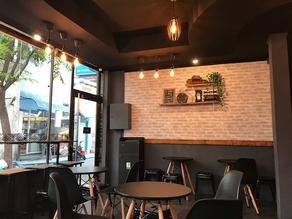Imperial Chemical Industries of Australia and New Zealand ltd.
v.
Federal Commissioner of Taxation
25 march 1970
Imperial Chemical Industries (Australasia) Ltd was formed in 1928 as an Australian subsidiary of the British chemical company ICI Ltd.
And was renamed Imperial Chemical Industries of Australia and New Zealand Limited (ICIANZ) in 1929.

The taxpayer claimed capital allowance under s 54 of the Income Tax Assessment Act 1936 in respect of certain parts of buildings which it owned, namely:
- acoustic metal pan fittings and and their supporting framework, forming ceilings in two office buildings owned and used by the appellant reduce noise which were quite standard in reducing noise levels in modern buildings; and
- electrical wiring and conduits and trunking designed to convey electricity which had no special relevance to the taxpayer’s activities beyond that of any other occupier.
Section 54 provided that capital allowance was available in respect of property, being “plant or articles” owned by a taxpayer and used by the taxpayer or installed ready for use to produce assessable income.
The Commissioner has disallowed a claim for the capital allowance and the Board has upheld the assessment on the basis that neither parts of the buildings constituted “plant or articles” within the meaning required in s 54.
ISSUE: Were the acoustic ceiling and electrical wiring “plant or articles” and therefore eligible for capital allowance?
High Court: Kitto J.

Each of the buildings is constructed with two of its four walls substantially of glass and with no permanent partitions.
The floor space is divided by movable partitions into such areas as best suit the activities to be provided for from time to time, and many of the partitions do not reach to the ceiling.
The consequential advantages as regards lighting and general convenience would be gravely offset by the disadvantage of excessive noise, but for the sound-absorbing quality of the ceilings.
They consist of metal panels, or tiles as they are called, having multiple perforations, backed by paper bags containing sound-absorbent material, and each supported by a metal framework which is attached by metal rods to the concrete floor above.

The panels can be readily removed, e.g., for the purpose of gaining access to service pipes that lie in the space between ceiling and the underside of the concrete slab, and they can be moved up or down on their supporting rods.
The whole ceiling installation may be removed, if necessary, by cutting the rods.
There is nothing unusual nowadays about the provision of such a ceiling, though the panels in the case of the appellant’s buildings are of a special size.
This and other methods of reducing the noise level in modern buildings are standard practice.
Obviously the ceilings and every part of them, the removable panels no less than the supporting framework, are fixtures and form part of the buildings.
The mode of affixation is slight but adequate, and its purpose is to provide the building with ceilings as essential parts of the structure.

The purpose, in other words, is to make the building a complete building.
The ceilings are there for the sake of the building, not the building for the sake of the ceilings.
In my opinion, while they are in position they are plainly not “articles”.
The appellant’s main contention concerning them is that they are “plant”.
But they are no more than parts of the shelter, so to speak, in which the appellant chooses to carry on its activities.
They play no part in those activities.
Their sound-absorbing qualities do, no doubt, make working in the building more comfortable, and consequently, I presume, more efficient, and to that extent they are better ceilings than sound-reflecting ceilings would be.
But every part of a building makes some contribution to the comfort and efficiency of those who work in it.

To take it notionally to bits and describe as “plant” any bit that has a function which is useful in connexion with the business carried on there seems to me indefensible.
The truth is that the ceilings with which we are concerned do nothing for the appellant’s business that they would not do for the business of any other occupier.
They are in like case with the walls, floors, windows and doors, not to mention the roof ; that is to say they are useful for anyone who wants to work in the building, and more useful than less well thought out units of the same kind would be, but still only part of a general setting for work, not part of the apparatus of any income-producing process.
The case of Jarrold v. John Good &Sons Ltd. (1963) provides, in my opinion, not an analogy but a direct contrast.

The electrical wiring with its enclosing conduits, and the trunking, are also parts of the general equipment of the building, fixtures beyond question, and having no relevance to the activities of the appellant beyond the relevance they would have to any occupier’s activities.
Together with switchboards, sub-switchboards and junction boxes, they form the reticulation system for conveying throughout the building electric current which is drawn ordinarily from the Melbourne City Council’s power supply mains and in emergencies from a diesel electric generating plant in the basement of the building.
I see no difference for present purposes between these electricity reticulating agents and the water reticulating pipes that run throughout such a building.
It seems to me impossible to regard these elements in the equipment of the building as “plant” any more than as “articles”.

The construction of the building as a building of the general type to which it belongs would be incomplete without them, and their function does not go beyond making the building a suitable general setting for a wide range of possible activities.
I have been referred to a number of decided cases of which it will be sufficient to mention:
- Yarmouth v. France (1887);
- Quarries Ltd. v. Federal Commissioner of Taxation (1961); and
- Inland Revenue Commissioners v. Barclay Curle &Co. Ltd. (1969)
In what I have said I have endeavoured to apply the explanations given in those cases of the meaning of “plant” in such a context as that of s. 54.
The taxpayer could not therefore claim capital allowance in respect of these items under s 54
In my opinion, neither the acoustic ceiling nor the electrical wiring were “plant”.
The function of the acoustic ceiling and electrical wiring did not constitute plant or articles as they did not go beyond making the building a suitable general setting for a wide range of possible activities.
The items were “only part of the general setting for work, not part of the apparatus of any income- producing process.”

Our website's articles, templates, and material are solely for reference. Although we make every effort to keep the information up to date and accurate, we make no representations or warranties of any kind, either express or implied, regarding the website or the information, articles, templates, or related graphics that are contained on the website in terms of its completeness, accuracy, reliability, suitability, or availability. Therefore, any reliance on such information is strictly at your own risk.
Keep in touch with us so that you can receive timely updates |
要获得即时更新,请与我们保持联系
1. Website ✍️ https://www.ccs-co.com/ 2. Telegram ✍️ http://bit.ly/YourAuditor 3. Facebook ✍
- https://www.facebook.com/YourHRAdvisory/?ref=pages_you_manage
- https://www.facebook.com/YourAuditor/?ref=pages_you_manage
4. Blog ✍ https://lnkd.in/e-Pu8_G 5. Google ✍ https://lnkd.in/ehZE6mxy
6. LinkedIn ✍ https://www.linkedin.com/company/74734209/admin/






